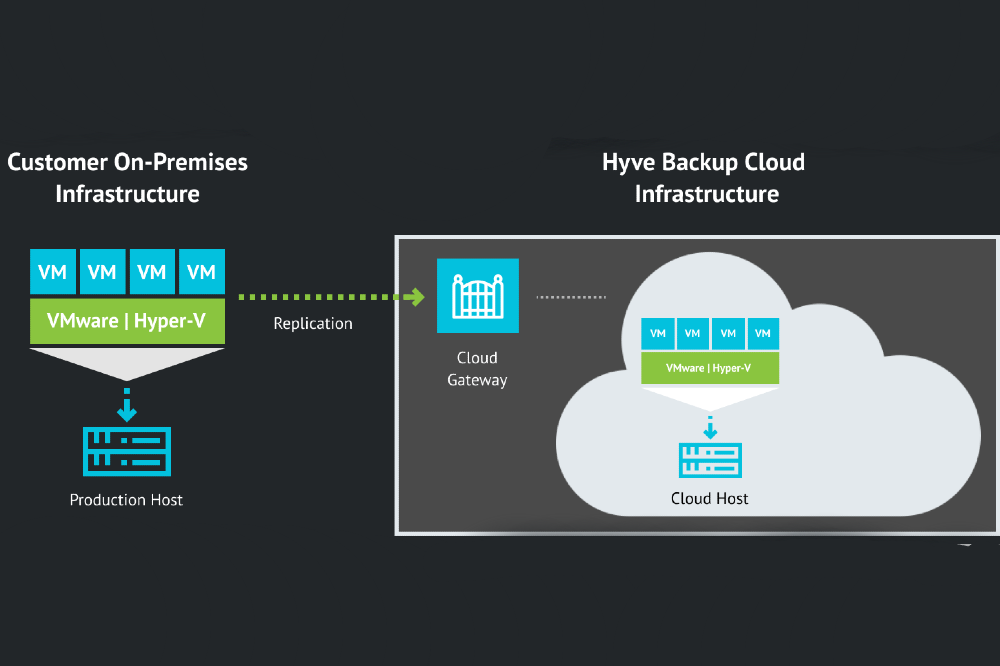In the new era of remote working, Backup as a Service (BaaS) has become a trending topic in the IT World. It allows for companies to duplicate files, folders, and entire data repositories to secondary data centres, so that all sensitive information is protected against the risk of loss from hacking, error, or any other kind of technological or physical damage. But, is it enough to guarantee business continuity in the event of a disaster? Jon Lucas, co-director, Hyve Managed Hosting, explains.
The integral nature of data in today’s business world, along with how important it is to protect it should not be underestimated – in fact, staggering figures suggest that 60% of companies that lose critical data shut down within 6 months of the loss, according to the National Archives & Records Administration in Washington.
When it comes to safeguarding your business-critical data and minimising data loss, there are varying levels of service you can opt for, including BaaS and Disaster Recovery as a Service (DRaaS) solutions. And it’s the differences between them that can help you determine which one is best for your company.
Most BaaS solutions on the market essentially copy crucial information from primary data centres or on-premise office environments to off-site, secure data centres. The frequency of the data replication can be tailored to meet your business objectives and you decide what is backed up, from databases to applications.
By being handled by a third-party managed service provider (MSP) that connects systems to a private, public or hybrid cloud in a secure data centre, BaaS provides a much more secure solution than backing up files to a local server or external hard drive, whilst also eliminating the hassle of rotating or managing tapes to get your data off-site. Maintenance and management are left to the provider so that in the event of data loss in your primary location, the only thing you need to worry about is simply requesting the backup copy. However, it is important to be aware that if any of the infrastructure is down, the responsibility of restoring it lies with you rather than the MSP.
Disaster Recovery as a Service (DRaaS), on the other hand, goes beyond simple backups. It replicates a company’s whole infrastructure – applications and website included – and data to provide failover to a secondary data centre.
In the event of a natural or a man-made disaster, the duplicated environment is manually activated, and the necessary virtual machines (VMs) are triggered to enable the failover, using the resources (RAM/CPU) on demand. This ensures that a company’s infrastructure is protected and able to run as normal in a matter of minutes.
Hypothetically, if your company happened to be the victim of a cyberattack that disrupted all your business functions, with a BaaS solution in place, you’d have the peace of mind that all your data was copied and protected in a secure secondary site. However, it could take hours – days, even – to get your business website and applications up and running again.
Ultimately, the reason why DRaaS is so important is simply down to the cost of downtime, as outages can result in financial losses, as well as operational delays and reputational damage. It suits businesses that require constant uptime and data replication, where downtime that lasts for more than a few minutes can cause major repercussions – e-commerce or ticketing websites, for instance.
DRaaS solutions guarantee business continuity by protecting both your data and infrastructure. Plus, the responsibility of recovery is placed with your provider, so you can step away from managing the process.
BaaS solutions generally cost less upfront than DRaaS, as the MSP is only responsible for the storage. However, the aftermath of not having a proper DR plan in place in the event of a disaster can be devastating and ultimately lead to a much higher cost further down the line.
When it comes to assessing which solution is best for your company, one thing I can assure you is: there is not a ‘one-size-fits-all’ approach. Both are intended to be bespoke depending on your unique business needs.
If your business can survive the possibility of long periods of downtime with only your data restored, or if you already have a comprehensive DR plan in place, then BaaS could be a good fit for you. From an expert perspective, if you go down the BaaS route I’d recommend having a team in-house that is well-equipped to deal with infrastructure restores in the event of a disaster.
DRaaS could be a better solution for you if uptime and constant data replication are critical to your business operations, and downtime that lasts for more than a few minutes could cause permanent damage. In a nutshell, if the cost of downtime for your business outweighs that of investing in a DRaaS solution, DRaaS is probably the best option for you.
Your business can also benefit from having both BaaS and DRaaS in place to guarantee that your data is secure and ready to failover as quickly as possible in the event of a disaster.
The more operations rely on information technology, the greater the need to protect it. BaaS and DRaas work in different ways to safeguard your business data. IT managers should assess which caters best for their contingency plans and operational needs in order to choose the right investment.


